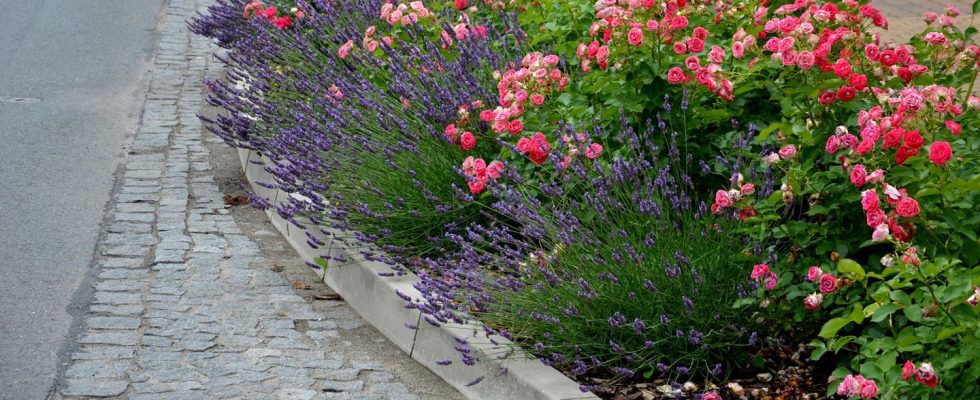Good against weeds
How you can conjure up a robust sea of flowers with easy-care ground cover roses
Ground cover roses are suitable for straight surfaces as well as slopes and embankments
© beekeepx / Getty Images
Because of their low height, small shrub roses are referred to as ground cover plants. The flowering plants spread across the country. Unwanted wild growth is at a disadvantage. We present four varieties to you.
Ground cover roses are popular plants in the garden not only because of their white, yellow, pink or red flowers, which appear (often several times) between spring and autumn: their compact and extensive growth means they reduce weed growth in the long term. In addition, the shrub-shaped plants are said to be extremely resistant to frost and leaf diseases – and are therefore considered very easy to care for and robust. Regardless of which variety you choose, all ground cover roses prefer a sunny location and will also accept a semi-shady spot if necessary. Below you will get to know four varieties.
Ground cover roses: Four robust varieties in comparison
1. “Jazz” ground cover rose
Between June and October the ground cover rose presents “jazz” its colorful flowers, which range in color from apricot to copper orange to pink. It is suitable for planting garden sections, large areas and rose beds. The hardy plant prefers a sunny to semi-shady place and a humus-rich soil. Its growth height is between 50 and 70 centimeters .
2. “Sea Foam” ground cover rose
The richly blooming ground cover rose “Seafoam” can develop fast-growing shoots up to two meters long. The perennial plant is hardy and blooms in summer: During this time it develops bright white flowers with a touch of pink. Sea Foam grows 40 to 60 centimeters high and also likes to be grown in a sunny place to be planted in a partially shaded place.
3. “Matador” ground cover rose
Whether for the garden, the terrace, in the pot or on the balcony: the ground cover rose “Matador” has a maximum height of 80 centimeters and likes it sunny to partially shaded. Its bright red flowers appear several times from June to October before the hardy rose goes to rest. The ideal planting time is in March, April, May, June, September, October or November.
4. “Flirt” ground cover rose
The ground cover rose appears between June and September.flirt” in its pink flowers. The broad, bushy plant is hardy and perennial. It grows 40 to 60 centimeters high and prefers a humus-rich, permeable and nutrient-rich soil – in the garden or bed. It is suitable for individual and group planting, and is also… Rose tolerates pruning well.
Planting and caring for ground cover roses
Regardless of which ground cover rose you choose: When it comes to the question of what you should consider when planting and caring for it, all plants have similar requirements. It is important for you to know that roses are only suitable as ground cover against weeds if you choose a variety that grows at least 40 centimeters high – otherwise too much daylight would reach the earth and promote undesirable wild growth.
The soil should always be loose, rich in nutrients and humus so that the ground cover roses can easily spread their roots. In addition, rainwater can drain away better. Speaking of water: In the beginning you should water the young plants regularly so that they grow well. Later, the plants are so resistant that you only need to help with a can of water during longer dry periods. To promote flower growth, you can plant the plants in spring and summer Rose fertilizer pamper.
One more tip at the end: Ground cover roses usually do not need to be cut back due to their low height. Nevertheless, the plant will be happy if you regularly remove dead, diseased or old wood. You will also support the dense and blooming growth of the roses if you thin out the plants every four years before they sprout again.
Source: My beautiful garden
You might also be interested in:
This article contains so-called affiliate links. Further information are available here.


